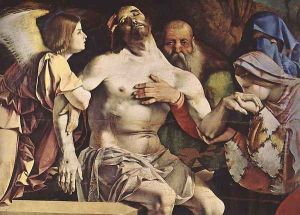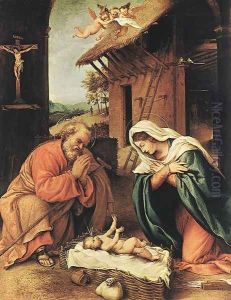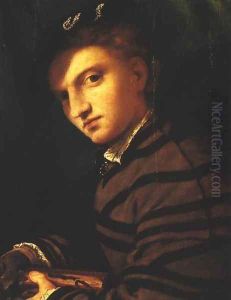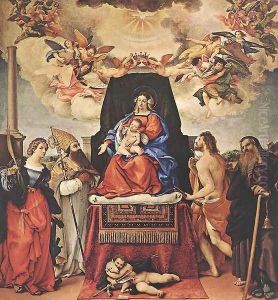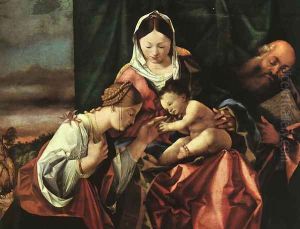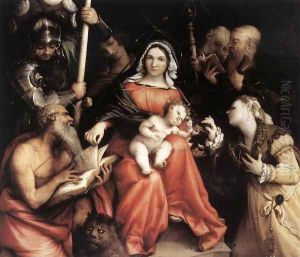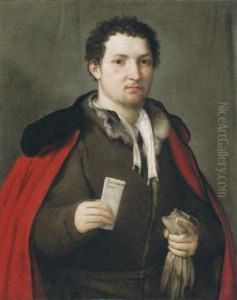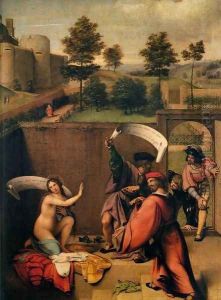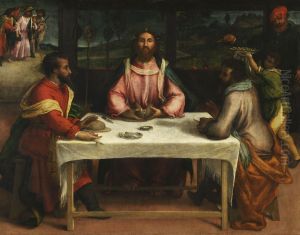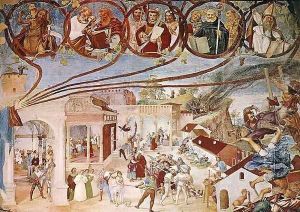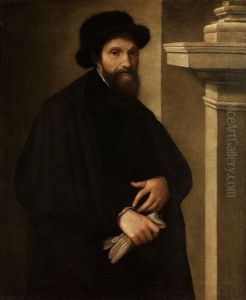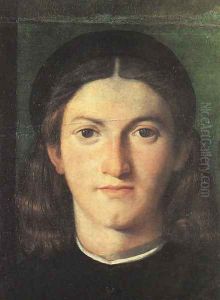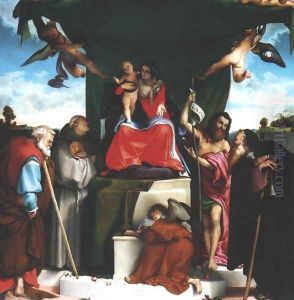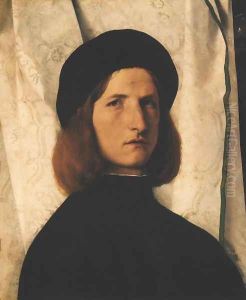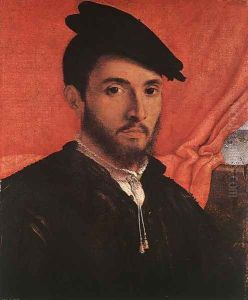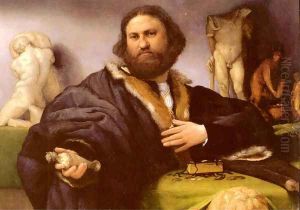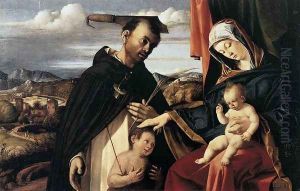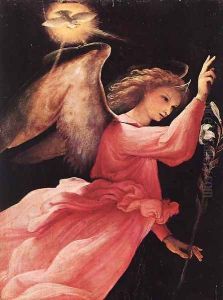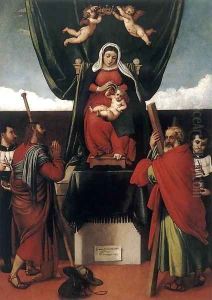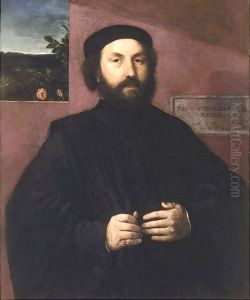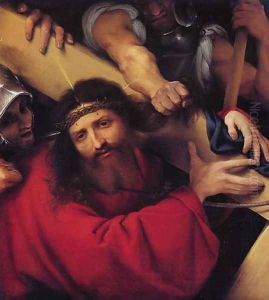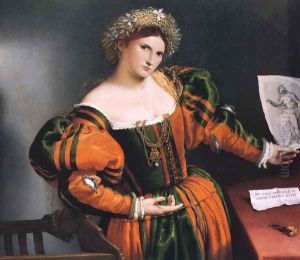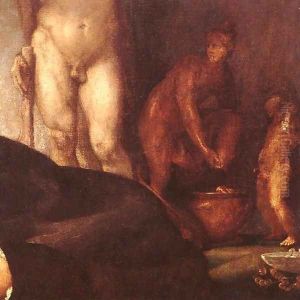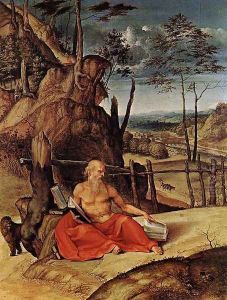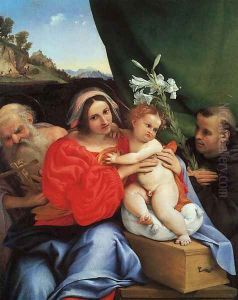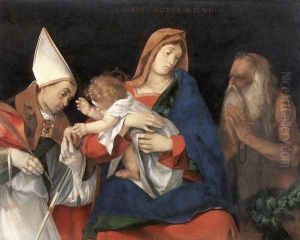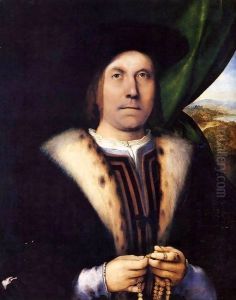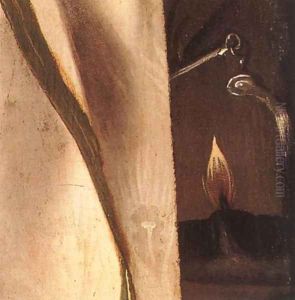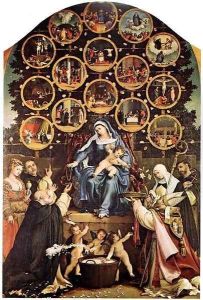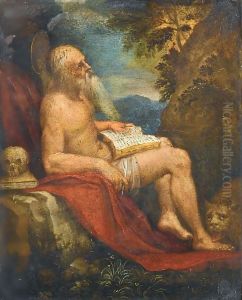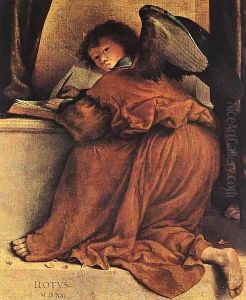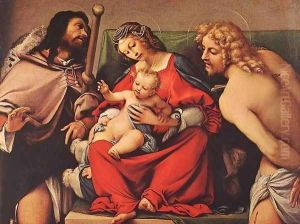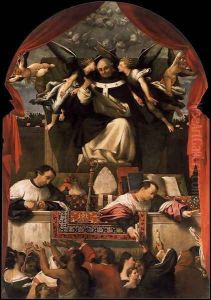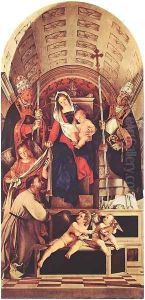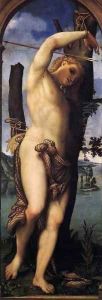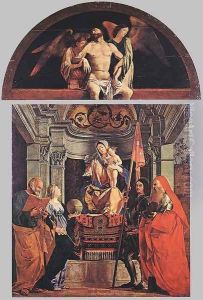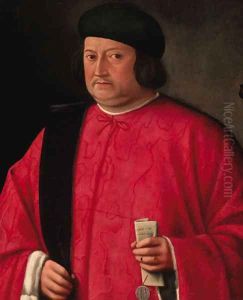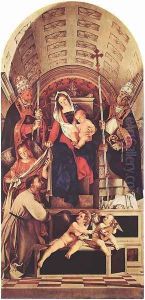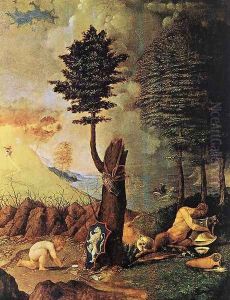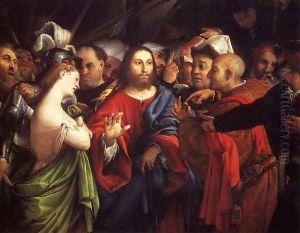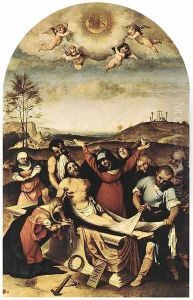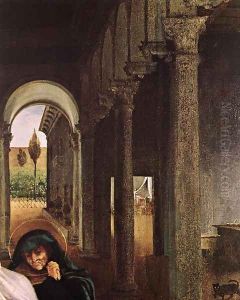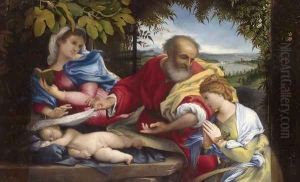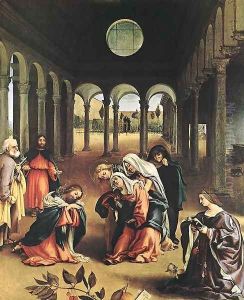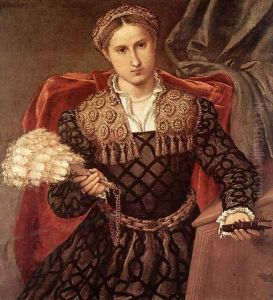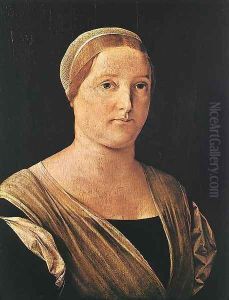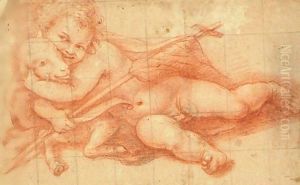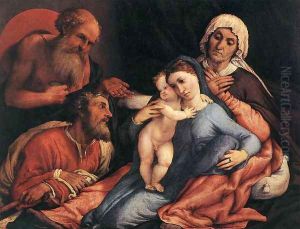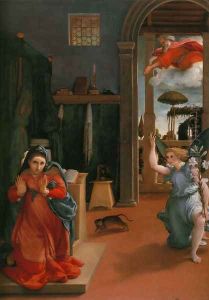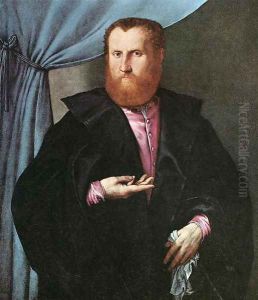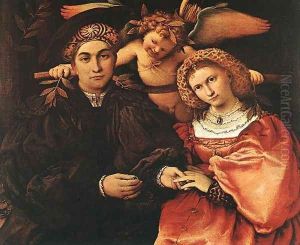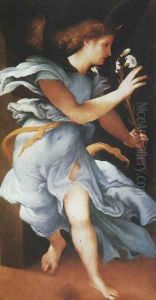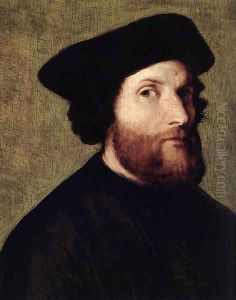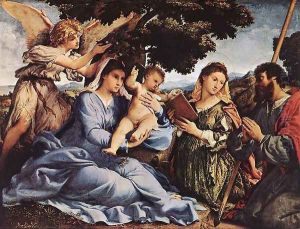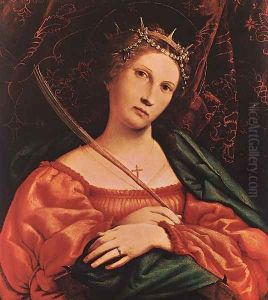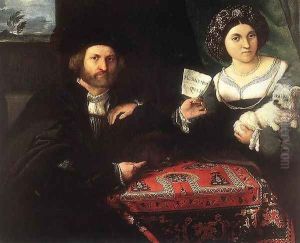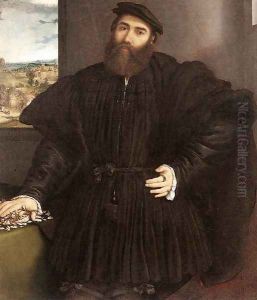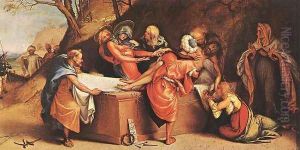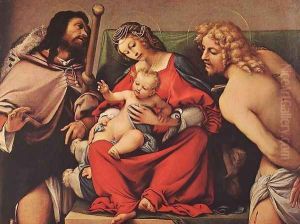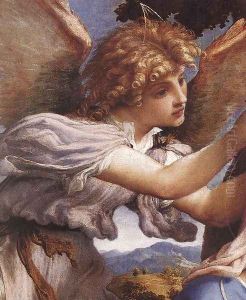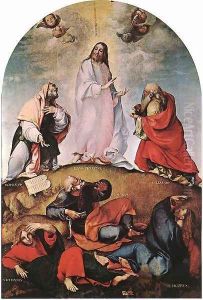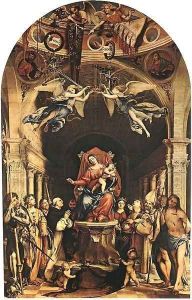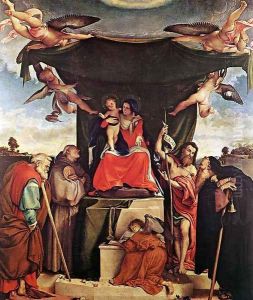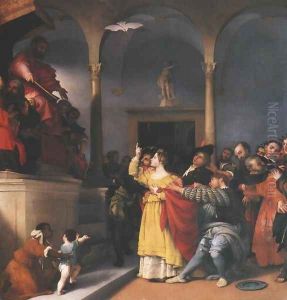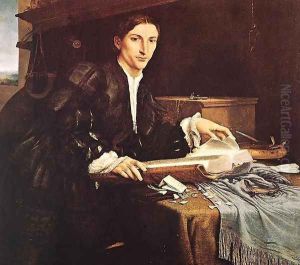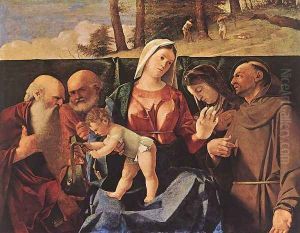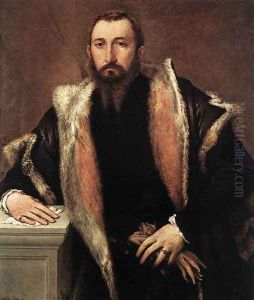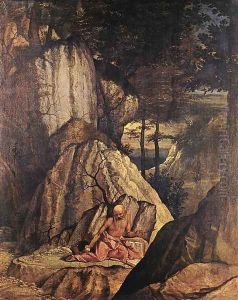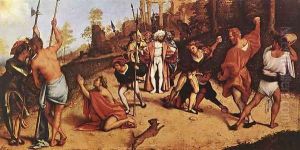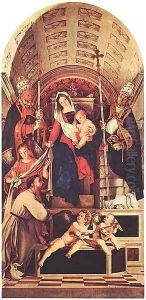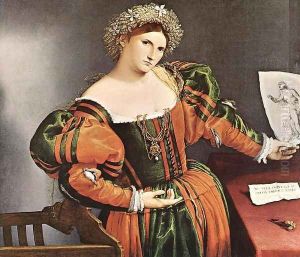Lorenzo Lotto Paintings
Lorenzo Lotto was an Italian painter, draughtsman, and illustrator, traditionally placed in the Venetian school. He was born around 1480 in Venice, Italy, though some sources suggest he may have been born in the small town of Treviso. Lotto is known for his distinctive style, which was influenced by the works of Giovanni Bellini and Albrecht Dürer, and later by Raphael. His work, however, maintained a unique quality, characterized by deep psychological insight into his subjects and a use of color that was expressive and often quite bold for his time.
During his early years, Lotto worked in Treviso and then Rome, where he was exposed to the High Renaissance styles that were predominant in the early 16th century. He was active during a period of great artistic ferment and was a contemporary of titans like Titian and Giorgione. Despite this, he never achieved the same level of fame or financial success as some of his contemporaries. Lotto is best known for his portraits, which are often noted for their intricate detail and the complex inner lives they seem to reveal. He also painted religious works, which were distinguished by their vivid narratives and emotional intensity.
In the 1520s, Lotto spent a significant amount of time in Bergamo, where he produced some of his most acclaimed works, including altarpieces and portraits. His later years were marked by financial difficulties and a sense of isolation, as his style fell out of favor with the changing tastes of the time. He moved frequently, seeking commissions in various cities, including Ancona and Loreto. Towards the end of his life, Lotto took holy orders and retired to a religious sanctuary.
Lotto's work was largely forgotten after his death in 1556 or 1557, but his reputation was revived in the 19th century when art historians began to appreciate his individual style and contribution to the Venetian Renaissance. Today, Lorenzo Lotto is recognized for his innovative approach to portraiture and his ability to capture the complexity of human emotion. His paintings can be found in major museums around the world, and he is celebrated as a master of color, composition, and expressive portraiture.
